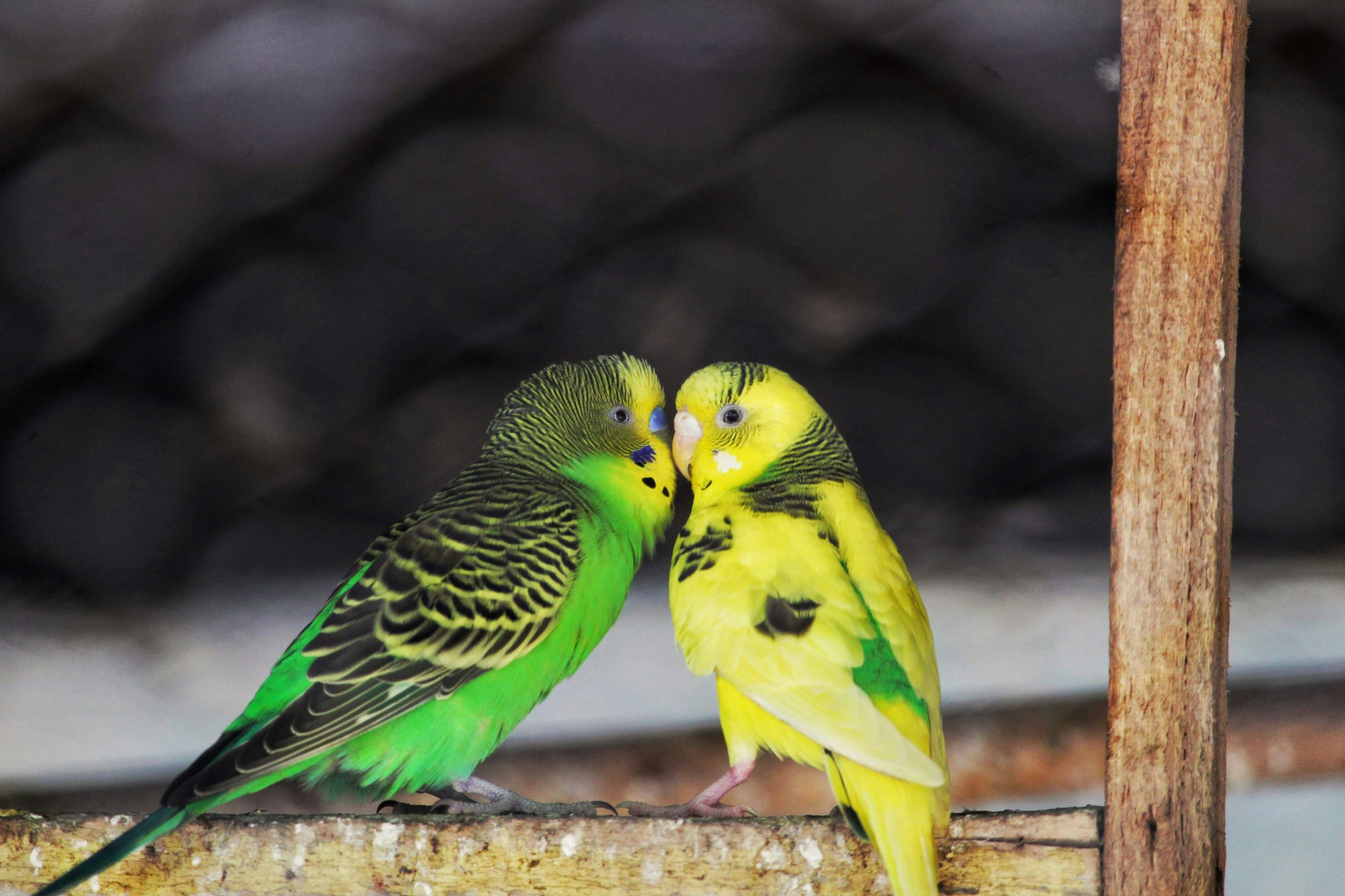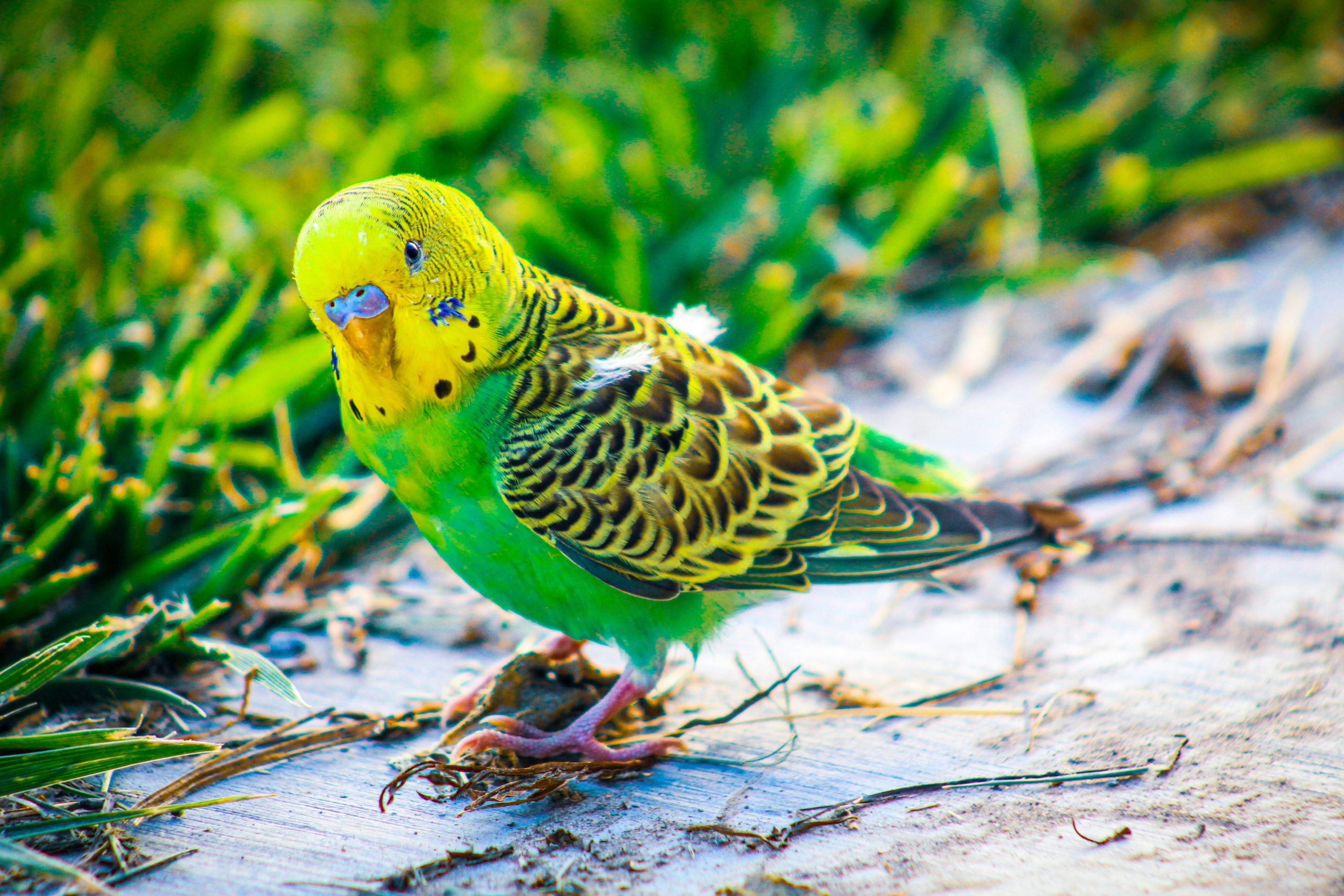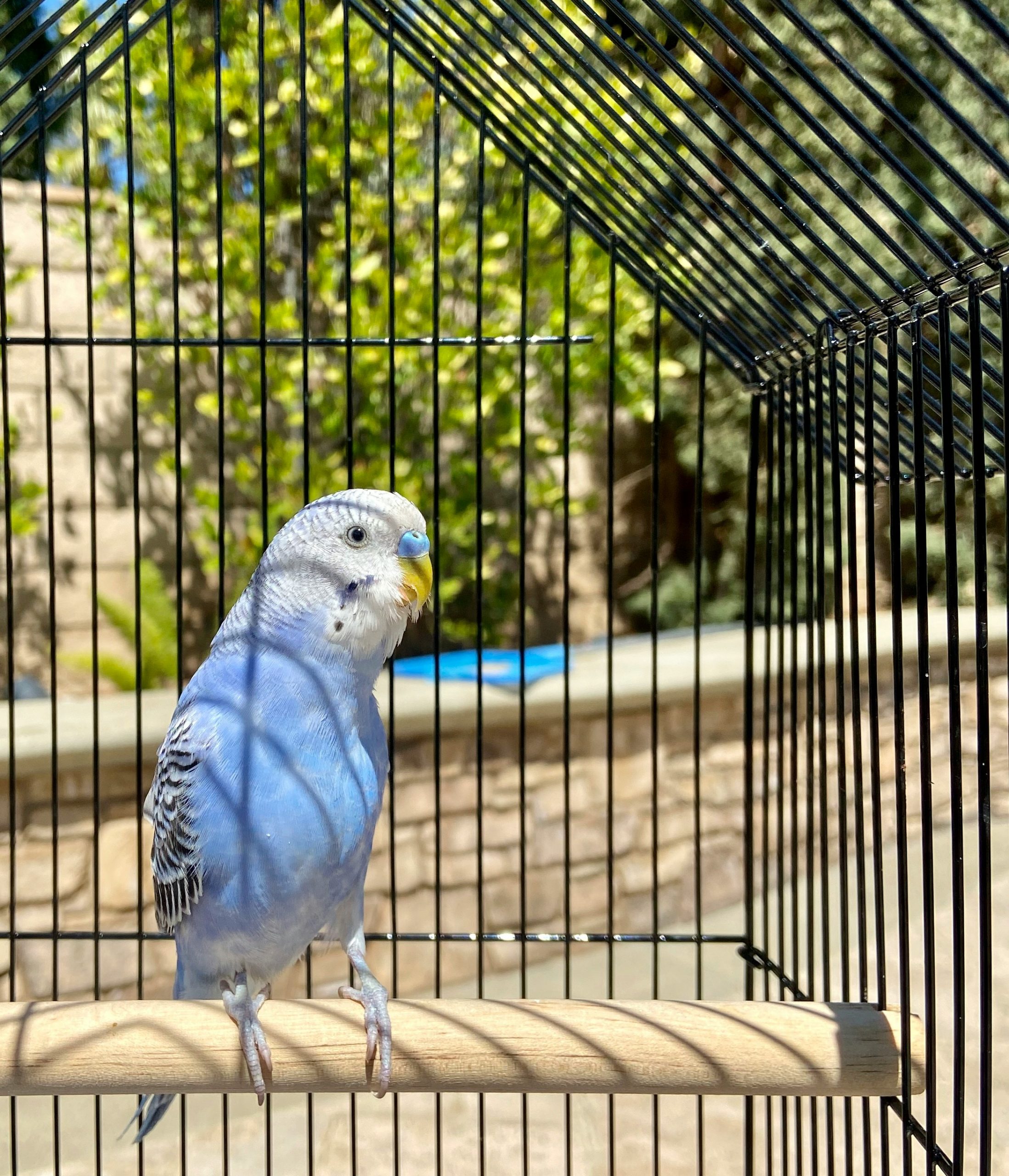budgie spangle mutation in budgerigars results in distinctive wing markings. Learn about its characteristics, breeding implications, and care considerations for spangle budgies.
Expert Opinion on Spangle Budgie Mutations
Here’s some information on expert opinions and case studies regarding spangle budgie mutations:
Expert Opinions:
- Genetics: Avian geneticists can provide insights into the specific genes responsible for the spangle mutation and its variations. They can explain the inheritance patterns and potential challenges in breeding specific traits.
- Avian Veterinarians: Avian vets can offer expert advice on the health considerations of spangle budgies. They can discuss any potential health concerns associated with certain mutations or breeding practices.
- Show Breeders: Experienced show breeders who specialize in spangle budgies can share their knowledge on breeding standards, judging criteria, and achieving desired spangle characteristics.
Finding Expert Opinions:
- Look for articles or interviews with avian geneticists, avian veterinarians, or reputable show breeders who focus on budgie mutations.
- Online forums or communities dedicated to budgie breeding may have discussions with experts or experienced breeders.
- Consider attending bird shows or events where breeders showcase their spangle budgies. This can be a great opportunity to connect with experts and gain insights firsthand.
Case Studies:
Case studies on spangle budgie mutations can showcase breeding programs or individual breeding experiences. These can provide valuable insights into:
- Successful Breeding Techniques: Document successful breeding programs that produce desired spangle traits. This can include details on breeding pairs, mutations involved, and the resulting offspring.
- Challenges and Solutions: Explore cases where breeders encountered challenges in achieving specific spangle characteristics. Discuss the problems faced and the solutions implemented to overcome them.
- Genetic Variations: Case studies can document unexpected breeding results or the emergence of new spangle variations. This can contribute to the understanding of complex spangle genetics.
Finding Case Studies:
- Look for articles or blog posts from breeders who share their experiences with breeding spangle budgies.
- Online forums or communities dedicated to budgie breeding may have case studies shared by members.
- Bird shows or events can be a platform to connect with breeders who might be willing to share their experiences.
Using Expert Opinions and Case Studies:
By incorporating expert opinions and case studies into your webpage content, you can enhance its credibility and value for your audience.
- Cite expert opinions to provide scientific backing to your information on spangle mutations and breeding.
- Use case studies to illustrate real-world breeding scenarios, challenges, and successes.
- Ensure the information is from reputable sources and breeders with a proven track record.
By including these elements, you can create a more comprehensive and informative resource for your target audience.
Characteristics:
The spangle mutation in budgies is a genetic variation that affects the feather coloration and markings. Some key characteristics of the spangle mutation include:
- Reversed wing feather markings: The wing feathers display a distinctive pattern where the markings are reversed compared to normal feather markings.
- Lighter head and neck feathers: The feathers on the head and neck tend to be lighter in color compared to the body feathers.
- Absence of throat spots: Spangle budgies typically lack the throat spots that are present in many other budgie varieties.
Spangle mutations paired with opaline mutation:
When the spangle mutation is paired with the opaline mutation, it results in a unique appearance:
- Wing feathers have body color edges: The wing feathers exhibit a distinctive pattern where the edges of the feathers are the same color as the body feathers.
Varieties of spangle mutations:
There are several varieties of spangle mutations, each with its unique coloration and markings:
- Opaline violet spangle
- Opaline olive green spangle
- Sky blue spangle
- Melanistic spangle
Description of melanistic spangle mutation:
The melanistic spangle mutation is a particular variation that is characterized by:
- Increased melanin pigment in feathers: This mutation results in an increased production of melanin pigment in the feathers, leading to a darker appearance.
- Darker appearance: The overall appearance of the budgie is darker due to the increased melanin pigmentation.
- Retention of spangle pattern: Despite the darker coloration, the distinctive spangle pattern is still visible.
- Darkened wing markings: The wing markings are also darkened due to the increased melanin production.
Comparison between normal spangle mutation and melanistic spangle mutation:
The main difference between the normal spangle mutation and the melanistic spangle mutation lies in the intensity and distribution of melanin pigmentation in the feathers:
- Normal spangle mutation: The melanin pigmentation is distributed in a way that creates the distinctive spangle pattern, but the overall coloration is not significantly darkened.
- Melanistic spangle mutation: The increased melanin pigmentation results in a darker overall appearance, while still retaining the spangle pattern.
Opaline spangle
The opaline spangle is a combination of the opaline mutation and the spangle mutation in budgies. This combination results in a unique feather coloration and pattern:<h3>Characteristics:</h3>
- Opaline feather quality: The opaline mutation gives the feathers a distinct “opalescent” or iridescent sheen, creating a shimmering effect.
- Spangle pattern: The spangle mutation contributes to its distinctive reversed wing feather markings and lighter head and neck feathers.
- Body color edges on wing feathers: A characteristic of the opaline spangle is that the wing feathers have edges that match the body color, creating a visually striking contrast.
Breeding Spangles
The combination of these two mutations results in a budgie with a unique and visually striking appearance, making the opaline spangle a prized variety among budgie enthusiasts.
New Mutation
The spangle mutation in budgies was a relatively new development in the world of avian genetics. It is considered a spontaneous mutation that occurred in the early 20th century, and its discovery was a significant event for budgie breeders and enthusiasts.
History
The spangle mutation was first documented in the 1920s, although its exact origin is uncertain. It is believed that the mutation occurred spontaneously in a breeding line of budgies, possibly due to a genetic accident or a random mutation.
Initially, the spangle mutation was met with skepticism and uncertainty within the budgie breeding community. However, as breeders began to understand the genetic patterns and characteristics of this new mutation, it gained popularity and became a prized variety.
Coloration
The spangle mutation in budgies is characterized by a distinctive coloration pattern that sets it apart from other budgie varieties. The most notable features include:
Spangle Light Green
One of the most recognizable spangle varieties is the spangle light green budgie. This variety exhibits the following characteristics:
- Reversed wing feather markings: The wing feathers display a distinctive pattern where the markings are reversed compared to normal feather markings.
- Lighter head and neck feathers: The feathers on the head and neck tend to be lighter in color compared to the body feathers.
- Absence of throat spots: Spangle budgies typically lack the throat spots that are present in many other budgie varieties.
- Light green body feathers: The body feathers of the spangle light green budgie are a beautiful shade of light green.
Double Factor Spangle Yellow (green series)
Another striking variety is the double-factor spangle yellow budgie from the green series. This budgie exhibits:
- Intense yellow coloration: The double-factor mutation results in a deeper, more vibrant yellow coloration compared to the single-factor spangle yellow.
- Reversed wing feather markings: Similar to other spangle varieties, the wing feathers display distinctive reversed markings.
- Lighter head and neck feathers: The head and neck feathers are lighter in color compared to the intense yellow body feathers.
Breeding Pattern
The spangle mutation in budgies follows a specific breeding pattern based on the principles of Mendelian inheritance. Understanding this pattern is crucial for breeders who wish to produce high-quality spangle budgies consistently.
According to Mendel’s Theory of Inheritance, the spangle mutation is a dominant trait. This means that if one parent carries the spangle gene, there is a chance that some of the offspring will inherit the spangle mutation
Breeding Expectations
When breeding spangle budgies, breeders can expect the following outcomes:
- If both parents are spangle budgies, all offspring will inherit the spangle mutation.
- If one parent is a spangle budgie and the other is a normal budgie, approximately 50% of the offspring will be spangle budgies, and the other 50% will be normal budgies.
However, it’s important to note that other factors, such as the presence of additional mutations or genetic variations, can influence the breeding outcomes and the resulting phenotypes of the offspring.
Are Spangles Ruined?
Over the years, there has been some concern among budgie enthusiasts and breeders about the potential “ruination” of the spangle mutation. This concern stems from the belief that indiscriminate breeding practices or the introduction of other mutations may have altered or diluted the distinctive characteristics of the spangle mutation.
Anomalies
While breeding spangle budgies, breeders may occasionally encounter anomalies or unexpected outcomes. These anomalies can be attributed to various factors, including genetic variations, environmental influences, or the presence of other mutations.
One common anomaly observed in spangle breeding is the occurrence of feather markings that deviate from the expected spangle pattern. In some cases, breeders may notice feathers with irregular markings, blotches, or a lack of the distinctive reversed-wing feather markings.
Another potential anomaly is the appearance of color variations that differ from the standard spangle coloration. For example, a spangle budgie may exhibit unexpected shades or intensities of color, potentially indicating the influence of other genetic factors or mutations.
It is essential for breeders to carefully monitor and document any anomalies observed during the breeding process. Identifying and understanding these anomalies can provide valuable insights into the genetic mechanisms underlying the spangle mutation and contribute to the continued development and refinement of breeding practices.
Exhibition and Judging
The spangle mutation in budgies has gained significant recognition in the world of avian exhibitions and shows. Many budgie enthusiasts and breeders take great pride in showcasing their spangle budgies and competing for prestigious awards and accolades.
To ensure fairness and consistency in the evaluation of spangle budgies, various organizations and clubs have established specific judging standards and criteria. These standards typically focus on assessing the quality and authenticity of the spangle mutation, as well as other desirable characteristics such as overall feather condition, size, and conformation.
BS Standardised Scale of Points
One widely recognized judging standard is the BS Standardised Scale of Points, which provides a detailed breakdown of the criteria used to evaluate budgies in exhibitions. According to this scale, spangle budgies are judged based on the following factors:
- Spangle markings (20 points): The quality and distinctiveness of the reversed wing feather markings, as well as the lighter head and neck feathers.
- Coloration (20 points): The overall color intensity, purity, and uniformity across the feathers.
- Feather quality (15 points): The condition, texture, and luster of the feathers.
- Size and shape (15 points): The overall size and conformation of the budgie, including its proportions and stance.
- Condition (10 points): The overall health and well-being of the budgie, as reflected in its appearance and behavior.
Breeders and exhibitors strive to produce spangle budgies that meet or exceed these judging standards, as winning prestigious awards and titles can be a significant achievement in the world of budgie exhibitions.
Conclusion: Budgie Spangle
The spangle mutation in budgies is a fascinating and visually striking genetic variation that has captured the interest of avian enthusiasts and breeders alike. From its humble beginnings as a spontaneous mutation to its current status as a prized variety, the spangle budgie has undergone a remarkable journey.
Through diligent breeding practices, a deep understanding of genetic principles, and a commitment to preserving the integrity of the spangle mutation, breeders have contributed to the continued development and refinement of this unique budgie variety.
While challenges and anomalies may arise in the breeding process, the passion and dedication of the budgie community have ensured that the distinctive characteristics of the spangle mutation are celebrated and preserved for future generations.
As avian genetics continues to evolve and discoveries are made, the spangle mutation serves as a testament to the incredible diversity and beauty found within the world of budgies, captivating bird enthusiasts and inspiring further exploration into the fascinating realm of avian genetics.
FAQS
What is a Spangle Budgie?
A spangle budgie is a specific mutation of budgerigar characterized by distinct wing markings, typically appearing as clear, defined spots or bars on the wings. This mutation affects the distribution of melanin in their feathers, resulting in a unique and visually striking appearance.
Can a Budgie be Split for Spangle?
Yes, a budgie can be “split” for spangle, meaning it carries the gene for spangle even if it doesn’t visibly display the mutation. These budgies can pass on the spangle gene to their offspring.
What is the Difference Between Opaline and Spangle?
Opaline and spangle budgies differ in their appearance. Spangle budgies have distinctive wing markings, while opaline budgies have a smoother appearance on their bodies due to a different feather structure. Additionally, opaline budgies may exhibit different color distribution compared to spangle budgies.
Which is the Rare Budgie?
The rarity of a budgie can vary depending on factors such as breeding programs and individual mutations. While there isn’t necessarily a single “rarest” budgie, certain mutations or color varieties may be less common than others.
Are 2 Budgies Better Than 1?
Whether two budgies are better than one depends on various factors including their personalities, living environment, and the amount of attention they receive. While some budgies may thrive with a companion, others may be perfectly content as single birds.
Which Budgie is Best?
The “best” budgie for you depends on your preferences, lifestyle, and experience with budgies. Consider factors such as color, personality, and compatibility with other pets or family members when choosing a budgie.
At What Age Do Budgies Talk?
Budgies typically start to mimic sounds and talk between 3 to 6 months of age, although individual birds may start earlier or later. However, not all budgies will learn to talk, and the extent of their vocabulary can vary greatly.
Can All Budgies Talk?
While both male and female budgies can learn to talk, not all budgies will develop this skill. Some budgies may show more interest and aptitude for mimicry than others.
Do Girl Budgies Talk?
Yes, female budgies can learn to talk just like their male counterparts. The ability to mimic human speech is not exclusive to male budgies.
Will 2 Female Budgies Kiss?
Budgies may exhibit affectionate behaviors such as preening or regurgitating food to each other, but the concept of “kissing” as understood by humans doesn’t apply to budgies in the same way.
Which Budgie is Male?
Determining the sex of a budgie usually requires either DNA testing or observing physical characteristics such as the cere color, which differs between males and females.
Should I Get 3 Budgies?
Whether you should get three budgies depends on your ability to provide proper care, attention, and space for them. Adding additional budgies increases responsibility and may require a larger cage and more time for socialization.
Can 2 Male Budgies Mate?
Male budgies can form strong bonds with each other and may display mating behaviors, but they cannot produce offspring without a female mate.
How Do Budgies Make Love?
Budgies engage in mating behaviors such as courtship displays, regurgitating food, and preening each other as part of their natural breeding behaviors.
Is My Budgie Pregnant?
If you suspect your budgie may be pregnant, it’s best to consult with a veterinarian who specializes in avian care for an accurate assessment and guidance on care during this time. However, it’s important to note that budgies can lay eggs without mating due to hormonal changes or environmental factors.



